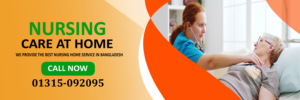Understanding Stroke: The Comprehensive Guide
What is a Stroke?
A stroke is a condition characterized by inadequate blood flow to the brain tissue. This means that there is insufficient oxygen and nutrients supplied to the tissues. As such, this damages brain cells, leading to major physical disabilities and mental disorders.

ঘরে বসে নার্সিং সার্ভিস পেতে এখানে ক্লিক করুন: Nursing Agency
ঘরে বসে মেডিকেল সার্ভিস পেতে এখানে ক্লিক করুন: Maisha Care
ঘরে বসে কেয়ারগিভার সার্ভিস পেতে এখানে ক্লিক করুন: Caregiver Agency
ঘরে বসে অক্সিজেন সিলিন্ডার পেতে এখানে ক্লিক করুন: Oxygen Cylinder
Types of Stroke
- Ischemic Stroke: This is the most common type of stroke and it occurs when a blood clot obstructs or narrows an artery leading to the brain.
- Hemorrhagic Stroke: This is caused by rupture of the blood vessel in the brain due to which bleeding occurs within or around the brain.
- TIA: Commonly known as a “mini-stroke,” a TIA is a short-term attack of stroke-like symptoms. A TIA, therefore, serves to be a warning that some more serious form of stroke is about to happen.
Causes of Stroke
- High Blood Pressure: This is the leading cause of stroke, as it may be able to damage blood vessels over some time.
- Heart Disease: Conditions such as atrial fibrillation increase a person’s risk of having a stroke.
- Diabetes: The disease contributes to vascular disease.
- Smoking: More than doubles your risk of a stroke.
- Too Much Alcohol: Raises blood pressure and leads to other health problems.
- Being Overweight: Raises your chances for high blood pressure, diabetes, and more.
- Lack of Physical Activity: Regular physical activities, through exercising, help in controlling body weight and keeping
- the heart in a healthy state.
- Stroke Symptoms
- The timely identification of the signs of a stroke can be very important in getting timely treatment.
These include:
- Sudden numbness or weakness in the face, arm, or leg, especially on one side of the body.
- Confusion or trouble speaking and understanding.
- Difficulty seeing in one or both eyes.
- Sudden trouble walking, dizziness, or loss of balance.
- Severe headache with no known cause.
Treatment and Management
- Immediate Treatment: Urgent treatment is essential. This may include medicines that dissolve clots, called thrombolytics, and/or surgery to remove them.
- Rehabilitation: Rehabilitation after a stroke includes physical, speech, and occupational therapy for recovery.
- Lifestyle Changes: A healthy lifestyle, along with good dietary intake and exercise, contributes to the management of stroke conditions and decreases the risk factor of suffering from a stroke.
Tips to Prevent a Stroke
- Regular Health Check-Ups: Keep a check on blood pressure and health conditions generally.
- Control High Blood Pressure: Keep your blood pressure under control through medication and/or lifestyle modifications.
- Eat Healthy: Focus on a diet that is rich in fruits, vegetables, whole grains, and other high-fiber foods.
- Stop Smoking and Limit Alcohol: Reduce these risk factors as far as possible.
- Be Active: Get involved in physical activities with an intention to maintain a healthy weight and good heart health.
If You Notice Stroke Symptoms
If you or a person you know is experiencing the symptoms of stroke, act FAST and get immediate medical care. Quick action can save a lot of damage and enhance the possibility of recovery.
Education on stroke and its recognition can foster early detection and appropriate treatment. Be educated, be healthy, and don’t hesitate to seek help whenever necessary.



